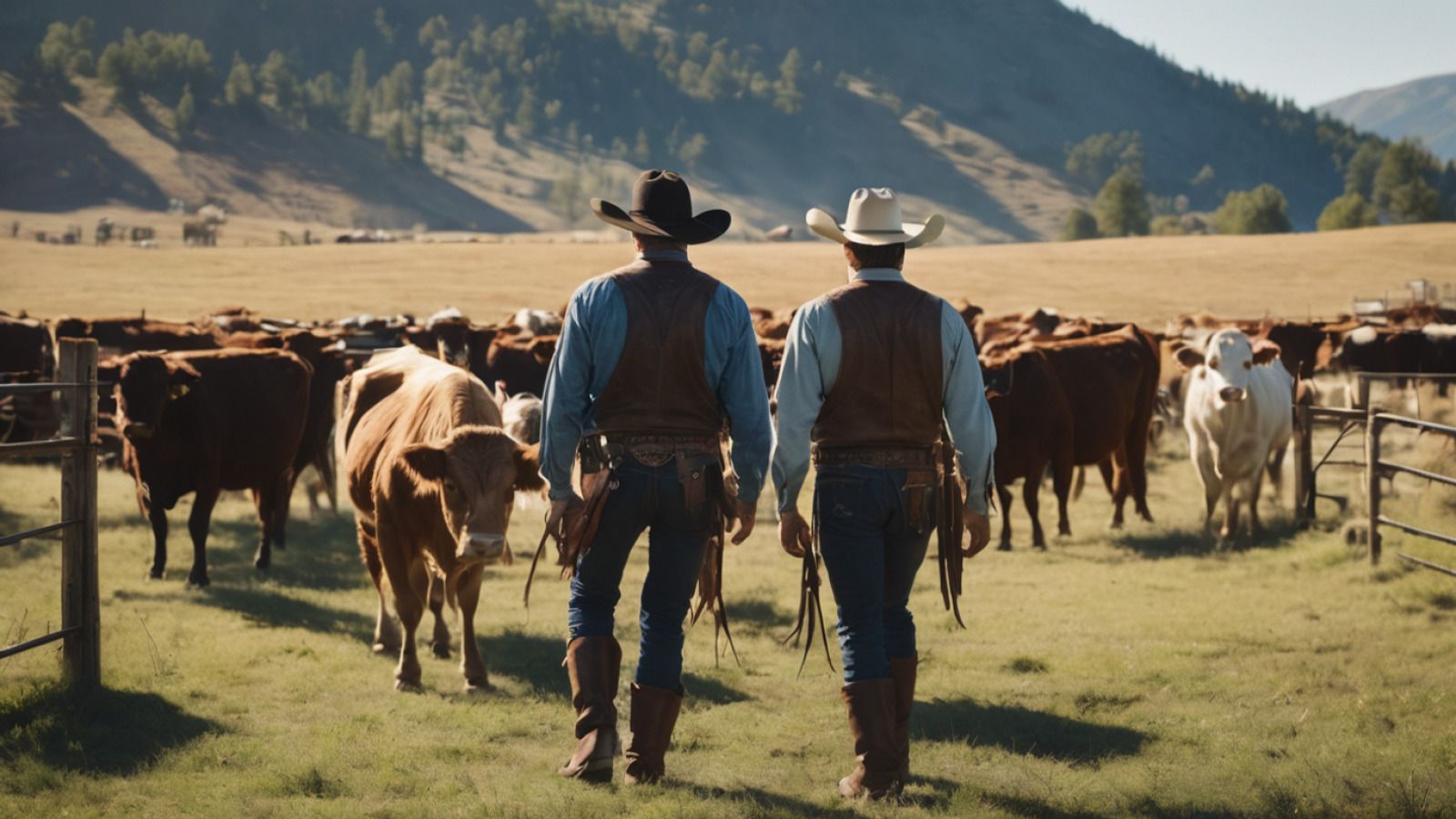With the massive fires this last week in the Texas Panhandle, it’s been a cause of great concern to cattle ranchers as that area is home to where most of them feed.
One farmer returned to his ranch to find 50 cows dead that he raised.
Many others that he owned were wounded, missing tails and even blinded from the fire.
But that’s nothing compared to another ranch that saw 4,000 burned up.
It’s a sad picture to paint.
There’s upwards of 4 million beef cattle in that state with nearly 88% located in that area.
CNN reports:
Hemphill County, Texas CNN —When Shane Pennington, a 56-year-old cattle farmer near Canadian, Texas, first saw flames from an enormous wildfire approaching the ranch he manages, his first concern wasn’t his home. It was his animals.
ADVERTISEMENTPennington told CNN he returned to the ranch to find around 50 cattle dead, with nursing cows desperately searching for their lost calves.
As the flames tore through the ranch, they caused excruciating injuries, burning off some animals’ tails and rendering others blind. “It just burned all the hair off them,” he said. “Their feet are coming off. Their hooves, they’re bloody.”
Some of them are “cows that I raised right here,” he said. “It’s just hard to see them burn up.”
Pennington is one of many cattle farmers whose livelihoods have been devastated by the Smokehouse Creek Fire, the largest wildfire in Texas history, which has burned more than a million acres of land across the panhandle.
The state is home to about 4.1 million beef cattle, according to David P. Anderson, professor of agricultural economics at Texas A&M University. And more than 85% are in the panhandle, according to Texas Agriculture Commissioner Sid Miller.
Farmers and agricultural experts say the wildfire will continue to affect the cattle industry for years to come.
In addition to the short-term effects of cattle killed and grievously injured by the flames, there will be lasting repercussions, as herds cultivated for years struggle to recover and traumatized cows fail to reproduce.
Speaking with CNN’s Omar Jimenez on CNN Newsroom Saturday, Miller asked for donations and prayers for Texas residents who have lost homes and livestock in the wildfires.
“There’s no grass, there’s no water for the livestock,” Miller stressed. “We’ve lost over 3,000 head, which is a very small number, that will double or triple easily. We’ve got cattle that we’re going to have to euthanize because of the damage to their hooves, their udders. We’ll just have to put them down.”
For Pennington, the inferno has been both financially and emotionally catastrophic.
ADVERTISEMENT“Your job is to keep them alive, not to destroy them,” he said. “It’s tough.”
“Even if they survive it, more than likely they’re gonna get pneumonia, they’re gonna get sick, they’re gonna die,” Pennington added.
He said he’s already euthanized some animals due to their injuries and anticipates the number will continue growing as he identifies which animals will be unable to recover from their wounds and illnesses.
And some animals will need to be culled simply because the hundreds of bales of hay meant to feed them burned up in the flames, he said.
It will likely take years for the business to recover. “We’ve got a lot of work ahead of us,” Pennington said.
The cattle business in Texas is worth an estimated $15.5 billion, making it by far the most profitable agricultural commodity in the state, according to the state’s Department of Agriculture. There are millions of cattle across the panhandle specifically, with some counties counting more cattle than people among its residents, the department reported.
Arent you in bed with big pharma?
Also help us out with the texas farmas.
The fires are curiously shaped like lines. pic.twitter.com/tNESquEp01
— Karthik Ramaswamy (@Kramaramb) March 5, 2024
This clip is pretty sad.
Warning: Shows the burnt cattle.
Latest on the Largest Texas Wildfire in Texas History that swept the Texas Panhandle:
– Hundreds (minimum) of cattle were lost
– 1 Million+ acres scorched
– 2 confirmed dead so far
– 500+ homes & buildings were destroyed
– Cause of the fire is still under investigation🎥: AP pic.twitter.com/Afr8WCZx4X
— Te𝕏asLindsay™ (@TexasLindsay_) March 2, 2024
This Footage Posted 2 Days Ago Hits Different Once You Learn That The Texas Fires Happened In The Exact Location Of The State Where 88% Of Texas Cattle Feed
Considering the relentless attacks against the beef industry in America by globalists
Is this fire a coincidence? pic.twitter.com/SJ6qj9lGki
— Wall Street Apes (@WallStreetApes) March 1, 2024
Here’s a scary video of flames reaching over onto the street as the cars drive by!
Headlines everywhere should read “Green beam in Texas causes massive fires”. #DEW (Need to have blue roofs — Joe Biden hs now confirmed that.) Pray for Texas & the war on Abbott (for the border) & the cattle ranchers & beef industry. This was on PURPOSE! pic.twitter.com/fOylafy6JK
— 🇺🇸Pure Blood 55🇺🇸 (@pureblood55) March 2, 2024
Thank God a lot of these ranchers were sent bales of hay.
Those poor traumatized cows will need it.
Delivery of hay!
Over 1200 bales of hay were delivered to ranchers in the Texas Panhandle following fires earlier this week that scorched many grazing fields. This includes the smokehouse creek fire which grew to over 1M acres and is the largest in modern state history#TXwx pic.twitter.com/9VOEvh9wew
— WeatherNation (@WeatherNation) March 2, 2024
Here’s more (including what YOU can do right now:
U.S. Ranchers Band Together, Raise $300M To Save Our Food Supply!
If you’ve been here for a while, you know I don’t like to just bring you problems, I like to bring you solutions!
The MSM just brings you bad news….over and over and over again.
Why?
Because bad news boosts ratings.
We don’t do that here.
We bring you TRUTH above all, and when we do cover bad news I always like to find a solution I can tack on with it.
So that’s what I’m doing right now.
Look, I don’t need to convince you our food supply is under attack, in more ways than one.
Toxins and preservatives and chemicals and most ingredients you can’t even pronounce added into every product…
Antibiotics and hormones and mRNA pumped into our beef, chicken and fish!
And that’s all assuming you’ll continue to be able to get the food, tainted and toxic as it may be….
I have been predicting for a while that the next “crisis” they hit us with will affect the food supply.
Remember when people freaked out about toilet paper and paper towels and suddenly you couldn’t buy them anywhere?
Shelves were bare and rationing was implemented by stores tracking how much you could buy?
That was bad, but nowhere near as bad and nowhere near the panic you’ll see when it’s not just paper products you wipe your butt with, but FOOD!
But like I said, I don’t think I need to convince you of these threats to our food supply.
I’d rather talk solutions!
Which is why I was so excited when I saw this:
This is so cool!
Want in?
Details 👉 https://t.co/nj3zYRqhyM pic.twitter.com/SRBY8yuqug
— Noah Christopher (@DailyNoahNews) January 19, 2024
And yes, that is just a Tweet on Twitter, which is why I dug deeper to get you the details.
From Grok:
According to the information provided, it appears that US ranchers are indeed taking steps to raise $300 million to build their own beef processing plants. In recent years, there has been growing concern among ranchers about the control and pricing power of the “Big Four” meatpacking companies. In response, some ranchers have decided to band together and invest in their own processing plants to have more control over the supply chain and potentially increase their profits.
For example, Sustainable Beef LLC, a company organized by ranchers in Nebraska, is planning to build a $300 million beef processing plant near North Platte. This plant is one of several similar projects in the works across the country, with others being planned in Iowa, Idaho, and Wisconsin.
The US Department of Agriculture is also taking steps to encourage a more diverse supply chain in the beef industry, allocating $650 million to fund the construction of mid-size and small meat and poultry plants, along with $100 million in loan guarantees.
Overall, it seems that US ranchers are indeed making a concerted effort to raise $300 million to build their own beef processing plants.
This guy gets it:
Get to know some ranchers, folks
— Shan (@okie2109) July 2, 2023
So now let’s get even more practical….
How can this help you?
How can YOU personally get to know some ranchers?
As usual, I’ve got you covered!
Allow me to introduce you to my friends….
I’ve personally searched out and partnered with one of these ranchers!
Even been out to one of the ranches in Idado to see it myself and it’s pretty incredible!
They’re doing everything right….
100% FREE from Antibiotics, added Hormones and mRNA:

They don’t depend on ranchers….because they ARE the ranchers!
Oh and they also own and control every other step in the process too!
The ranch, the processing, the packing and the shipping!

Think all meat is the same?
You have no idea until you actually try real meat.
The stuff you get at the store has been so processed and “preserved” that you don’t know the difference until you taste how it SHOULD be….
Check this out:

So if you want in and want to make sure you have a direct line to antibiotic free, free range pasture raised, no added hormones and no mRNA jab never not ever….I’ve got you covered!
It’s even called WLT Beef!
Here’s my personal link and you can do everything online.
See it here: https://www.WLTbeef.com/
As I always like to say, who loves ya baby?
Enjoy!




Join the conversation!
Please share your thoughts about this article below. We value your opinions, and would love to see you add to the discussion!